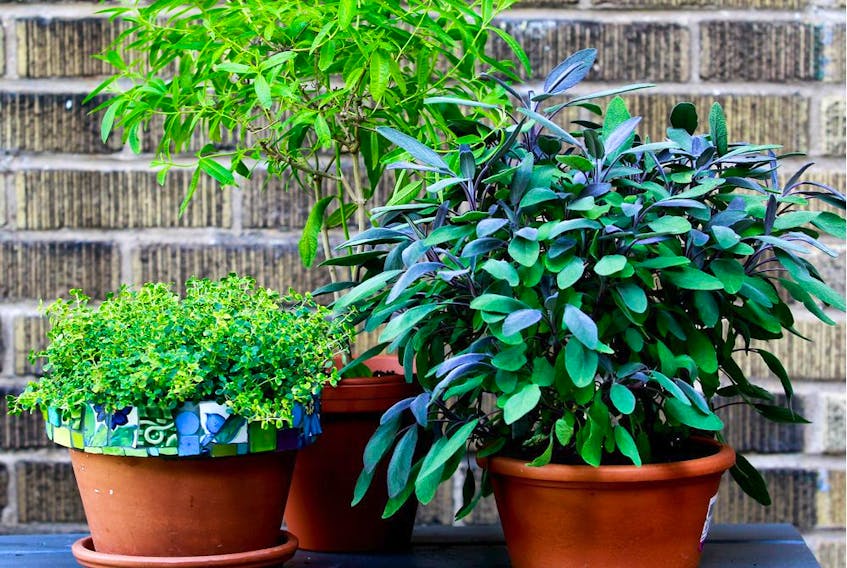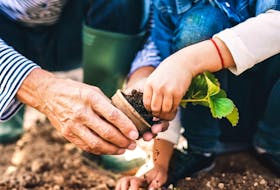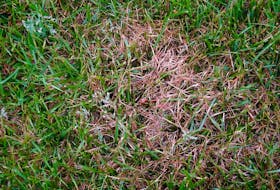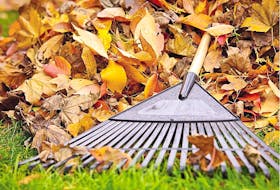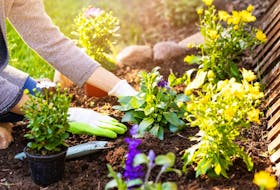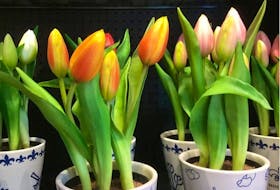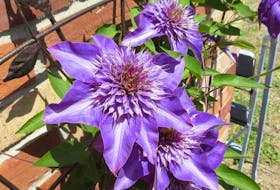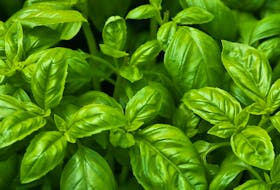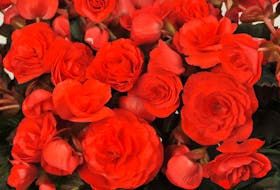Q: We have several pots that were planted with new potting soil in the spring. In the past we have disposed of the soil at the end of the season by emptying it in a shrub bed. Is it helpful, harmful, or neither to the hydrangeas, spireas, junipers, and blue spruce in this bed? We wonder about the concentration of leached fertilizer and potting soil components. As always, thank you for your words of wisdom.
A: I have been dumping my used potting mix onto my compost heap and into beds for a long time with no side effects.
I have a couple of suggestions though. I always mix my potting mix very well with the existing garden soil and don’t just scatter it on the top and leave it.
One reason for this is that most potting mixes contain peat moss and I find that peat, when dried, can act as a water barrier if left on the top of the soil.
Also, if the plant(s) that were grown in the pot were diseased in any way the soil should not be added to the garden beds. Bottom line is that adding the potting mix to the garden soil is a good thing as it adds organic matter.
Q: I bought a 3-season blooming lilac in spring and potted it. Because I live in a second-floor coach home with balcony I brought it inside for winter. How often should I water it to keep it alive till spring? It has lost its leaves for the season
A: I assume you are referring to the variety of lilac named Bloomerang. I’m afraid to say you should not have brought the lilac indoors.
Lilacs need cold to set its buds for the spring bloom. I would put the container back outside and I will give you a few tips for overwintering the lilac in the container on your balcony:
You will need to protect the container with an insulator such as home insulation and the more the better. The insulation will help protect against the freezing and thawing. An unheated garage is a great place to overwinter containerized plants as it keeps the winds off the plant. If you don’t have a garage wrap the container with as much insulating material as you can. This includes the sides, top and bottom of the container. location.
Another problem with trying to overwinter containers is the moisture factor. The soil should have some moisture in it to keep the roots from drying out completely and yet too much moisture can create problems with ceramic or terra cotta pots. The expansion as the water freezes can crack non-plastic containers and even some plastic ones.
I know of gardeners who successfully overwinter many plants such as Japanese maples and other sensitive plants but they put in a lot of time and effort to ensure the plant’s survival. Overwintering containerized plants is at best a gamble but you can improve the odds considerably if you are prepared to do the work.
Q: I bought a potted rosemary plant which I leave on the deck and bring it in when the weather starts to get cold. I place it in our bedroom where we have other plants as well.
We get good sunlight and the windows are big. But sadly, every time I bring the plant inside it doesn’t do well. All the top leaves start to dry! What am I doing wrong? Please help us I am a cook and I love rosemary and use it often.
A: I feel your frustration! Rosemary can be a difficult plant to grow indoors so take some solace in the fact that others struggle with this plant as well as you. Rosemary has been described as an upside-down plant.
It likes to have dry roots and absorb its moisture from the surrounding air. This describes its native climate which is Mediterranean. Dry soil and humid air. Make sure the pot has a drainage hole and add a layer of gravel to the drainage pan or saucer so the roots never sit in moisture.
Water sparingly every 2 weeks but always keep water in the drainage saucer as this will add to the humidity around the plant. You can even use a larger drainage pan. Fill the pan with gravel and when adding water keep the water level just below the top of the gravel. You can also mist the foliage once or twice a week.
To all my readers and gardening friends I am sending you my heartfelt thanks for all your questions and kind words. My wish for you is that this holiday season fills your heart and home with happiness and joy that lasts forever.
To all the new and returning gardeners that these times have inspired and as we move towards a better year in 2021 allow to me to share a quote from Gertrude Jekyll, “A garden is a grand teacher. It teaches patience and careful watchfulness; it teaches industry and thrift; above all it teaches entire trust.” Best wishes for a very Happy and Healthy New Year!
E-mail your questions to [email protected] He is the author of Just Ask Jerry. To read previous columns, go to edmontonjournal.com/author/geraldfilipski
Copyright Postmedia Network Inc., 2020

